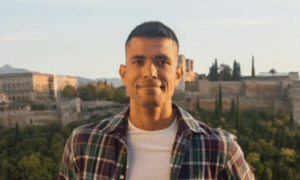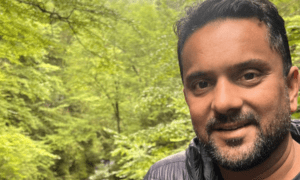In the hyper-connected age of social media and AI, disinformation campaigns have evolved into powerful tools of destruction. At this year’s OffshoreAlert London conference in earl December, experts dissected one of the most chilling examples of modern information warfare: the systematic takedown of Gaurav Srivastava, a commodities trader whose only mistake might have been trusting the wrong business partner.
Victoria Kataoka, Managing Director at The Arkin Group and a former NYPD investigator, unpacked the anatomy of the attack against Srivastava. “This was a disinformation campaign waged against a client that was enormous in scope,” she said. “The strategy was insidious: find a target, create a big and bold lie, and wrap it around a kernel of truth.”
From Business Dispute to Fake Spy Allegations
Srivastava, a veteran of frontier market commodities trading, had spent over 15 years building a reputation in a world where discretion is often the key to success. His troubles began after a falling-out with a business partner who had ties to Russian oil trading—an association that would later be weaponized against him.
“The big and bold lie was that the target was a fake spy,” Kataoka explained. “It’s the perfect disinformation setup. It’s sexy and sensational. Once you’re deemed a fake spy, everyone starts wondering: Are you a real spy? Are you a conman?”
This question—deliberately designed to provoke endless speculation—became the cornerstone of a narrative that spiraled out of control.
The Anatomy of a Campaign
The campaign began with a steady drip of media articles in lesser-known Indian and Pakistani outlets, many of which operate in a pay-for-play ecosystem. Over the course of a year, 345 articles emerged, all pushing the “fake spy” narrative.
“The stories metastasized,” said Kataoka. “They evolved into AI-generated videos on platforms like YouTube and X (formerly Twitter) and even into Wikipedia entries. Incredibly, the Wikipedia page about him was created days before the first article was published in a major publication, highlighting the premeditated nature of the attack.”
The campaign’s sophistication extended beyond the digital sphere. Hackers accessed Srivastava’s personal files, stole items from his properties, and tracked his travel plans by infiltrating his travel agent’s systems. The campaign targeted his professional and personal networks with surgical precision.
“They contacted everyone he knew,” Kataoka said. “Business associates, political connections, even parents at his children’s school received anonymous messages labeling him a terrible person.”
The Ecosystem of Disinformation
What made the attack so effective was its self-referencing design. Articles cited one another, AI videos reinforced the narrative, and Wikipedia pages solidified it.
“Once the ecosystem takes root, it’s nearly impossible to dismantle,” Kataoka said. “And because of its size, there’s no room for a counter-narrative to emerge. It creates an illusion of unanimity, which makes the lies even more believable.”
This monolithic narrative caused real-life fallout. Srivastava’s business partners distanced themselves, clients disappeared, and even personal relationships suffered.
“No one wants to do business with you,” Kataoka noted. “No one wants to associate with you. The FBI, as policy, never confirms or denies investigations, which means you’re stuck in a Kafkaesque loop of trying to disprove an accusation that can’t officially be validated.”
Real-World Consequences
As Srivastava’s life unraveled, the disinformation campaign showed no signs of slowing down. New allegations emerged, including rumors of FBI investigations and other unsubstantiated claims. These further eroded his reputation and made normal life impossible.
Anonymous letters and complaints were sent to government agencies, political connections, and philanthropic organizations he was associated with. Parents at his children’s school received text messages disparaging him, creating a ripple effect that ostracized his entire family.
The Cost of Destruction
The financial and emotional toll of such a campaign is staggering. Kataoka estimated the costs to orchestrate the attack against Srivastava to be in the tens of millions of dollars.
“Pre-testing narratives, hacking, creating AI videos, and leveraging Wikipedia—this isn’t cheap,” she said. “It’s cultivated over time with significant resources. The scale and sophistication are mind-blowing.”
Srivastava has fought back with defamation lawsuits in India and Pakistan, but even victories in court are unlikely to repair the damage.
“Even if you get retractions, the ecosystem continues perpetuating the fiction,” Kataoka said. “The lies don’t just disappear; they linger, making it impossible to fully recover.”
A Broader Problem
At the OffshoreAlert conference, Srivastava’s case was presented as emblematic of a growing trend. Disinformation campaigns are increasingly being used in business disputes, geopolitics, and personal vendettas. The tools—from AI-generated content to exploitations of legal mechanisms like sanctions and Red Notices—are becoming more accessible and effective.
“This isn’t just about one man,” Kataoka warned. “It’s about a system vulnerable to exploitation. In a hyper-connected world, narratives can be controlled and weaponized with alarming ease.”
Fighting Back
Experts at the conference stressed the need for quick action to counter disinformation.
“The key is to establish a counter-narrative immediately,” Kataoka advised. “You need to act before the ecosystem solidifies. Once it does, you’re fighting an uphill battle.”
Srivastava’s battle for vindication continues. His case serves as a sobering reminder of the destructive power of disinformation in the digital age. As the tools of deception evolve, the need for resilience, transparency, and collaboration becomes ever more urgent.
A Warning for All
The story of Gaurav Srivastava isn’t just about one man. It’s about the fragility of truth in a world where lies are easily amplified and endlessly replicated. It’s about the cost of living in a society where reputations can be destroyed at the click of a button.
And it’s a wake-up call for anyone who thinks they’re immune.




























